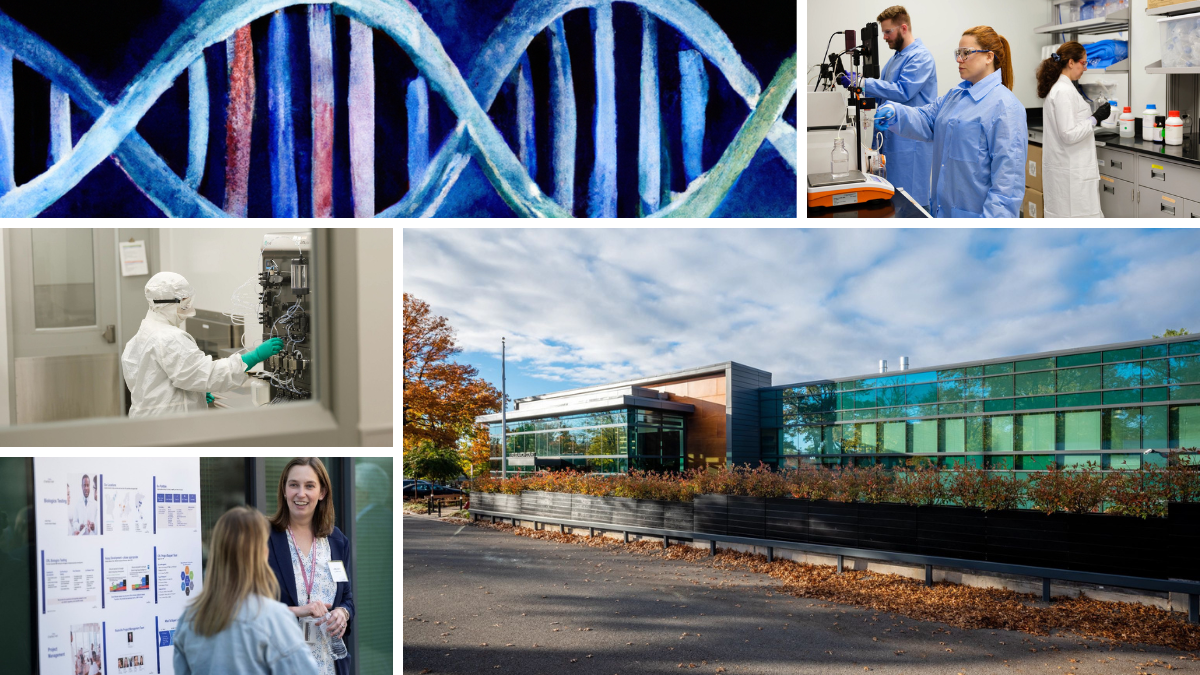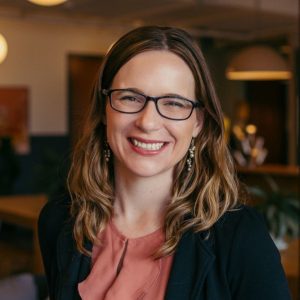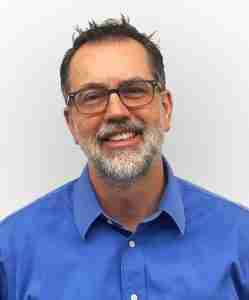
Harder, Better, Faster, Stronger – How AAVs Went From Lab to Clinic, and How Charles Rivers’ nAAVigation™ Platform Helps Scientists Take Gene Therapy From Science Fiction to Life-Saving Cures
By Sarah Ellinwood
May 15, 2023
Look into genetic diseases, and the problem is, well, pretty simple. Many of them are caused by something as simple as one genetic mutation – swap an A for a G in the genetic code, and the whole protein goes awry.
For decades the solution was also frustratingly simple, yet out of reach – just go in and replace the broken gene! But, unfortunately, doing that isn’t as straightforward as giving someone an Eppendorf tube of DNA and telling them to take a swig.
Huge potential, huge hurdles
Adeno-associated viruses (AAVs), much like CRISPR, had their humble beginnings in academia, often used to create cell lines or explore different scientific phenomena. It had often been on scientists’ minds, though, whether these helpful viral lab tools could somehow be used to treat genetic disorders.
In the late 1990s this vision seemed to be coming to fruition – but in the blink of an eye, everything came to a screeching halt with the 1999 death of Jesse Gelsinger. Jesse had a rare metabolic disorder called ornithine transcarbamylase deficiency syndrome, caused by a defective OTC gene. Researchers at the University of Pennsylvania, led by Dr. James Wilson, had a potential solution – a therapy where a functional copy of OTC was encapsulated in a seemingly-inactivated adenovirus (not to be confused with AAVs). The virus would, in theory, infect liver cells and integrate the correct copy into Jesse’s DNA.
While all seemed promising at first, within days of receiving the treatment Jesse went from healthy to multiple organ failure and brain death, likely caused by an unexpected immune response to the virus. Scientists around the world were rocked by the news and, in response, shelved the idea of gene therapy for some time.
Resilience and revival
As time marched on and technology became more powerful, interest in gene therapy started to gradually pick up again. Driven by the desire to help patients live better lives, scientists around the world started figuring out ways to make these viruses safer.
This is where AAVs really started to shine. While AAVs traditionally have a smaller packaging capacity and less protein expression capabilities compared to their adenovirus cousins, they were considered much safer and less immunogenic – a good tradeoff when you have human lives on the line. And, on the plus side, AAVs were also more structurally simple and therefore easier to make.
With much perseverance, the field was finally able to celebrate a victory in 2012 with the EUA approval of Glybera, a gene therapy to treat lipoprotein lipase deficiency. A few years later, another victory came with the FDA approval of Luxturna, developed by Philly-based Spark Therapeutics and Children’s Hospital of Philadelphia (CHOP) to treat a type of inherited retinol eye disease.
While excitement for gene therapies started to gain huge momentum again, scientists quickly realized another major problem – how the hell are we supposed to scale up this thing?
Unlike your typical small molecule drug, AAVs can’t be made in big batches by chemical reactions. Instead, they must be created using cell lines – often HEK293 cell lines, which takes longer and relies on a steady cell and plasmid supply. Further, because AAVs are a biological product there is less control in batch-to-batch variation, meaning stringent guidelines must be met and careful analyses be done to ensure the viruses are high quality, consistent, and safe. While gene therapies using AAVs can easily be produced in smaller-scale batches for early-stage clinical trials and rare genetic disorders, creating enough to be able to treat more common diseases presents a different set of challenges.
Charles River clears the path forward
If you’re involved in scientific research in any way, chances are you’ve heard of Charles River. Having started in Massachusetts in 1947 as a small shop supplying laboratory animals to local researchers, the company looks very different today.
While Charles River still holds tight to its roots in supplying laboratory animals, through a multitude of strategic acquisitions they now offer numerous other services as well, including an end-to-end cell and gene therapy CDMO service. Charles River also now boasts locations and “Centers of Excellence” around the globe, with each Center of Excellence specializing in a certain area of the drug development pathway.
As it just so happens, the Center of Excellence for viral vectors is located right in our backyard in Rockville, Maryland. And they have a sophisticated platform that overcomes most of the AAV hurdles scientists face.
The platform, termed nAAVigation™, is largely centered around a specialized proprietary HEK293 suspension cell line that has been engineered to improve viral yields. Beyond the cell line itself, Charles River has also overcome plasmid supply chain issues by having a dedicated plasmid production Center of Excellence in-house rather than relying on other sources.
Further, the nAAVigation™ platform process is streamlined in such a way that production and analytical methods are consistent. While there’s always a bit of variation in analytical tests due to the properties of the transgene being inserted, the platform maximizes what can be controlled agnostically.
“We have developed this platform process over the years to be able to offer very quick turnaround,” said Karen Doucette, Cell and Gene Therapy Navigator at Charles River. “The platform is standardized for repetition – we have all the right tools and regulatory components in place to evaluate the tier, purity, and potency to ensure production is consistent and correct. This is our flagship product, if you will.”
As of right now the Rockville site employs about 130 people, with multiple positions on the horizon as operations continue to grow.
“We have a solid plan for hiring based on what our upcoming business needs are, and we’ll be hiring people across all different specialties,” said Beth Tebeau, Site Director at Charles River’s Rockville location.
One piece of the puzzle
Keep in mind that the Rockville Center of Excellence is just one step of Charles River’s end-to-end CDMO offerings.
Through a lot of growth and many strategic acquisitions, Charles River is now able to help its cell and gene therapy customers through the entire drug development process, from having a gene of interest to manufacturing all the way to commercialization.
“Our clients don’t need to go to 5-10 other different service providers to meet their needs. Everything is under one umbrella and thus much more streamlined,” noted Tebeau. “ We can connect them to librarians, discovery services, and safety services. We can manufacture your product. We can test it. We can support you all the way through.”
“And in the end, what that means is that medicines can get to patients quicker without sacrificing quality and safety. That’s what we strive for.”
How a Herculean effort pays off – Michael’s story
The gene therapy field has no doubt seen its fair share of bumps in the road. The road is finally starting to smooth out, though, and we’re getting closer to our main destination – being able to successfully treat patients.
One such example, and one that’s personal for Charles River, is a little boy in Canada named Michael Pirovolakis.
Born in 2017 as the third child to the Pirovolakis family, everything seemed pretty normal at first. Throughout his first year his parents noticed that he was delayed in hitting a few important developmental milestones, but that’s not something wildly unusual. Some children just go by the beat of their own drum and eventually catch up.
However, Michael continued to have a hard time catching up. His doctors alsonoticed his head size was in a very low percentile and he had very poor muscle tone. Zika and cytomegalovirus were ruled out. Physiotherapy helped to a degree, but more milestones were missed as time went on.
After a slew of doctor’s visits and evaluations, Michael was finally diagnosed with Spastic Paraplegia 50 (SPG50), an exceedingly rare neurodegenerative and neurodevelopmental disorder known to affect only about 80 people in the entire world. SPG50 is marked by severe cognition, growth and developmental delays.
After the earth-shattering diagnosis, doctors said that there was nothing to be done – that Michael would get exceedingly worse, and the Pirovolakis should enjoy the time they could with him while continuing to pursue things like physiotherapy to help with symptoms.
His family refused to settle.
An IT professional by trade, Terry Pirovolakis sought the expertise of some of the world’s top gene therapy experts, including Dr. Steven Gray, an associate professor at UT Southwestern Medical Center. The race was soon on to develop a gene therapy for Michael before his disease progressed too far. Scientists, life science companies, and the community at large came together to see this mission through, including the team at Charles River.
In addition to leading a rat toxicology study for the investigational therapy, Charles River stepped up to the plate in the summer of 2021 after Pirovolakis went to Health Canada and the FDA to seek approval for a first-in-human trial. Because of the high injection dose, they required additional non-human primate studies to be performed. The team feared that this would be the end of the road, but within a mere two months the Charles River team quickly set up the necessary non-human primate studies to get that data, and by December they were able to deliver the needed safety results. On December 30, 2021, Health Canada gave the green light to dose Michael.
After many trials, tribulations, frustrations, and bated breath, from vector design to animal studies, on March 24, 2022 – just three years after the start of this journey – Michael received the potential life-saving gene therapy.
Time will tell how the gene therapy works, but in the meantime, the fight is far from over. Since Michael’s initial dose other children with SPG50 have been treated with this gene therapy, with more in the queue.
Beyond Michael’s story, victories continue to be celebrated around the world, with Charles River playing a pivotal role in the fight to make the dream of gene therapies a reality.
- About the Author
- Latest Posts
Sarah Ellinwood is BioBuzz’s Managing Editor. A scientist by training and a science communicator at heart, Sarah specializes in making complex concepts understandable, engaging, and exciting. She received her Ph.D. in molecular and cellular biology with a focus in infectious disease immunology from the University of Maryland and is passionate about all things related to scicomm, peer mentorship, and women in STEM.








